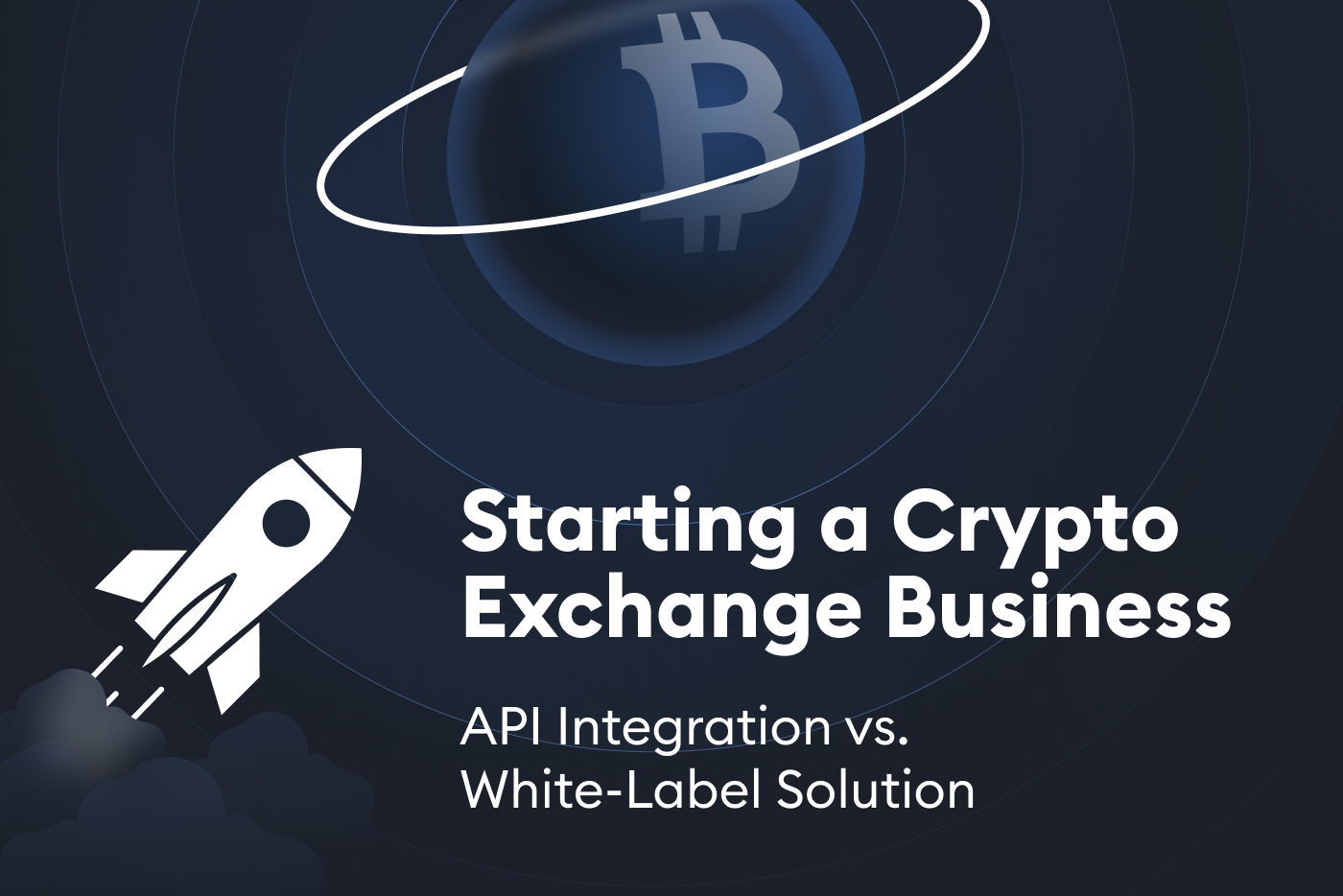
There are 420 million crypto users worldwide, and this number isn’t likely to stop growing. The global blockchain market value is expected to reach $67.4 billion by 2026. Without a doubt, the crypto industry holds enormous potential and we are, arguably, at the mere start of its development. That’s why many entrepreneurs are attracted to launching a crypto exchange venture.
There are currently three different approaches to launching an exchange business; these include developing one completely from scratch, using API integration and development based on a provider’s infrastructure (crypto-as-a-service model), or utilizing a turnkey white-label solution that provides the back-end, the front-end, and possibility to customize the branding. Developing an exchange from scratch can be incredibly demanding and costly. At Scalable Solutions, we offer options for both API integrations and white-label solutions. Each of these approaches has its pros and cons, and choosing one depends on your budget, technical expertise, and business goals. What are the main differences between them and which one would work best for your business? Let’s investigate.
Crypto-as-a-service model: Benefits & Drawbacks
API Integration involves building an exchange using third-party APIs (Application Programming Interfaces) provided by various services and blockchain networks as building blocks. This approach provides flexibility to development teams to implement a wide variety of functions and fully customize the frontend design of the application. On the other hand, it requires a team of experienced developers and involves much more time for implementation.
Scalable offers robust APIs to cover a wide variety of requests: using the Broker API one can fully build a full-fledged exchange with spot, margin, and perpetual futures trading, simply integrate crypto payments or crypto swaps with deep liquidity into their applications. Our APIs provide access to digital asset trading across over 1500 books, deep liquidity, fiat on/off-ramps, crypto payments in 650+ cryptocurrencies, mass payouts, secure and highly cost-effective custodial operations, and much more. Read our article 5 Reasons Why Banks Should Offer Digital Assets to discover more about our product range.
Benefits of the crypto-as-a-service model
- Reduced costs and faster time-to-market compared to building digital asset exchange, wallet, or payment gateway from scratch
Integrating pre-built APIs saves time and money by not having to build everything from zero. Basically, our clients integrate APIs and use our technology that if developed from scratch would take them tens of millions of dollars and thousands of hours. Also, we offer more than 120 blockchains and run the nodes which can be quite costly. For instance, one Solana node costs 60 thousand dollars, and there are hundreds of such blockchains.
- More control over the features
The crypto-as-a-service model gives you more freedom over your exchanges’ features as APIs are used as building blocks for your platform, and you decide what services and blockchain networks to pick.
Drawbacks of the crypto-as-a-service model
- Dependency on third-party providers
Both crypto-as-a-service and white-label exchange approaches mean that your platform relies on a third-party provider. Any downtime or issues with the providers can cause disruptions for your users. That’s why scalability, security, and performance are one of the main factors to look for when choosing your technology partner. For reference, Scalable’s infrastructure sets the bar with the highest industry parameters of performance: :
- 100,000 TPS with an average latency of less than 1 millisecond;
- SLA’s uptime of 99,99% even at peak trading times;
- 70,000 mps per channel with 2 Gbit/s system-wide average data flow.
- Requires some technical expertise
Of course, developing a crypto exchange from scratch is incomparably harder than building one with APIs. But the crypto-as-a-service model still requires some technical expertise as well. If your approach is to integrate some of the functions as APIs and develop the remaining ones in-house, having a team of experienced developers is necessary.
White-label Exchange Solution: Benefits & Drawbacks
White-label solutions provide standardized exchange software that can be rebranded to suit your design requirements. Scalable offers a range of white-label products. Amongst them are Lite Instant Exchange, which is mainly designed for the crypto-beginners to execute fast simple swaps; Pro Exchange, which caters to advanced and institutional traders who care about advanced trading features; OTC white label which helps institutions to launch their own over-the-counter desk; Custodial and Non-custodial wallet applications to cater to various business needs with response to ease-of-use, budget and overall loyalty to the concept of decentralization. Read our articles Introducing Lite Instant Exchange: The Gateway to 300+ Million Crypto Users and Scalable Lite Instant Exchange VS Pro Exchange: Which One Suits You Best? to learn more about them and choose your ideal solution.
Benefits of a White-label Exchange Service
- Quick time to market
The hite-label approach significantly saves time and money on the development, which gives a newly emerged business a competitive advantage. While Scalable’s team is rolling out your new exchange platform, your team can take its time to start a marketing campaign beforehand to have a solid number of users when it’s released.
- Out-of-the-box
Scalable’s white-label products are out-of-the-box meaning that they contain all the necessary components to run a successful crypto exchange business: technology, fiat on/off ramp, AML and KYC, and even liquidity. Also, we don’t require any tech expertise from the client as we cover it fully.
- Reliable
White-label solutions are usually battle-tested on thousands of end-users and developed by experienced providers who offer technical support and security updates. Scalable’s technology has been tested out on millions of users over a decade, and its security has never been compromised or lost any funds.
Drawbacks of a White-label Solution
- Limited flexibility
White-label solutions may not be as flexible as building everything yourself, limiting the ability to add custom features and functionality. For custom development, it is always better to manage expectations and better choose an API solution where you get a shortcut for the development of specific features and can build everything else in-house.
- Dependence on technological partners
As we’ve already mentioned, a white-label business model involves a large degree of dependence on a technological partner, so it’s necessary to choose one with a good reputation and manage the risks.
Conclusion
Deciding between crypto-as-a-service and a white-label solution comes down to your business needs, budget, and timeline. If you have the resources and expertise, API integration offers more customization and control over the development of the features and customization of the front end. However, if you want a quicker and more affordable way to launch your exchange, then white-label solutions offer a reliable and secure option. Regardless of the approach, it is essential to work with reputable providers and prioritize security and reliability to ensure the successful launch and long-term success of your crypto exchange business. We can be your trusted technology partner that can take your business from step one to success. Contact our team to learn more.

